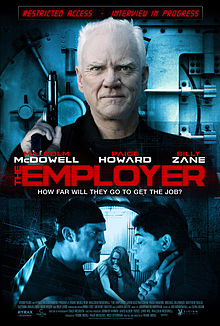 This is the third post in the series “what is the best way to save for retirement?”
This is the third post in the series “what is the best way to save for retirement?”
So what are the alternatives to a pension?
As we have discovered, a pension, at least in the way the financial services industry use the term is a savings plan. Its has two main advantaged over other forms of savings plans. The first is that an employer or business can pay into the savings plan for you. The other a more obvious is that contributions attract tax relief. These are both massive advantages and could be described as “money for nothing”. Under the new auto enrolment rules your 4% payment to a pension is essentially doubled, with 3% from your employer an 1% from HMRC. However be aware that as with all things, today’s rules are no predictors of the future, one that I may remind you is shaped by economic realities and the politicians that attempt to pretend otherwise.
So what are the alternatives? Well they are almost infinite, but lets narrow this down to three simple ideas.
- Investments
- Property
- A Business
As a pension is simply a pot of money to take income from for the rest of your life (with the option of buying an annuity if you want to). Then any form of investment can do this job, including a bank account (if indeed we can call holding a cash deposit account an “investment”). Today I will only focus on the investment option.
An Investment Portfolio
Investing is fraught with possible mistakes, almost every investment promises “out-performance”. This is largely hot air. Apart from selecting suitable investments and constructing a portfolio, investing has costs and any income from an investment, for example a dividend payment is liable to tax. Gains are also subject to capital gains tax. There are “tax free” investment products such as ISAs, but for many people the amount that can be put each year into an ISA is unlikely to be enough for your retirement (though many will find it more than they can actually save).
Are investments more risky than a pension?
No, you could have identical holdings in a pension and a “regular” portfolio. The issue is understanding how the portfolio is constructed, why and what returns over the long-term are likely to be achieved. Anyone that promises guaranteed results is being less than honest with you. Everyone has a different idea about which assets or markets will perform best – that’s kind of the point of a market – where people agree a price on something when they disagree what direction that price is heading. Its true that there are other tax efficient ways to invest, using EIS, VCTs and such like, but be warned, the term venture or enterprise is used sensibly and most people are neither.
So let’s take an example and agree lots of assumptions
Suppose you need an income of £20,000 a year and inflation-linked at 3% a year (yes we are guessing). If you only expect to live 10 years from retirement at 65 and are happy with this assumption (that the money runs out, all gone, nothing left!) then the income (actual cash) you take will be nearly £230,000 over 10 years to age 75. If we assume that the portfolio grows at 5% a year during this time (which may be ambitious as you are probably keen to have certainty that the money will pay out for 10 years) then you need a fund of about £175,000 at 65. If you expect to live for 20 years and then the fund runs dry… well you would take out total income of nearly £540,000 and need a pot of £320,000 at 65 to provide this.
What would an annuity give me?
If you were to buy an inflation linked annuity at 3%pa as a 65 year old, you would probably need about £500,000 at 65. This is based on a 4% annuity rate (4% of £500,000 being £20,000pa) The advantage of the pension route is that if you live longer than 20 years (85) it continues to pay a rising income until you die. The investment pot has run out. Both have the same assumptions about inflation (which will be wrong in practice, unless you are going to credit me with mystic powers).
Pension or ISA?
So here’s the hard numbers. The pension pot needs to reach £500,000 and the ISA investment portfolio, well let’s go for £320,000 and assume we can predict death at 85. Lets suppose we start saving at 35, giving us 30 years to grow the money by the time we are 65. Let’s also assume the pension and investment portfolio hold the same stuff and perform identically, with the same charges, let’s assume that over 30 years the funds grow at 7% for the sake of simplicity. We will also assume that you increase what you save by inflation (3%) each year so that the amount you pay is proportionally the same each month. This is now virtually a GCSE maths question (if only they’d taught us the maths that was important in life right!).
So to build £320,000 in the ISA investment portfolio, you need to invest £195.64 a month rising by 3% a year, a total outlay of £113,220 over 30 years. As you may imagine to achieve £500,000 in the pension over the same time with the same returns, you need to invest £305.69 a month initially, increasing by 3% a year. A total outlay of £176,906 over 30 years. So the pension costs you £63,686 more (about 36% more). However, with the pension you had 20% tax relief, so you really paid 80% of £176,906 or £141,524, still more than the ISA, but not that much more.
- £500,000 Pension pot actual cost for basic rate taxpayer £141,524
- £320,000 ISA pot actual cost for basic or higher rate taxpayer £113,220
Your employer can make payments too
Now imagine that your employer was also paying into your pension pot (which they cannot do with an ISA). Suppose that they are paying 3% of your salary – as they will be under auto enrolment, let’s assume you want £20,000 a year because you reckon that’s what you need to support your equivalent lifestyle today, so let’s just assume you earn £30,000 at the moment, so 3% is £75 a month. So if your salary rises at 3% a year in the same way, over 30 years, that’s £43,404 of employer payments in total. You can therefore reduce your own payments from £305.69 a month by £75 to £230.69 a month, which in practice is £184.55 a month net of basic rate tax relief…. Which is marginally less than the £195.64 you need to save into an ISA.
- £500,000 Pension pot with 3% employer contribution £106,804 net of 20% tax relief
- £320,000 ISA pot £113,220
Of course the more your employer pays the better, but I hope that I have demonstrated that tax relief and employer contributions make a big difference. Don’t forget that the annuity dies with you (unless you build in benefits for your spouse) but anything left in the ISA portfolio is merely added to your estate and subject to inheritance tax. The big gamble is predicting your life expectancy.
Tomorrow I turn to property as an investment. I hope that it evident that this is not advice, I am merely outlining an example and doing the sums. You should get specific advice to suit your circumstances.
Dominic Thomas: Solomons IFA




